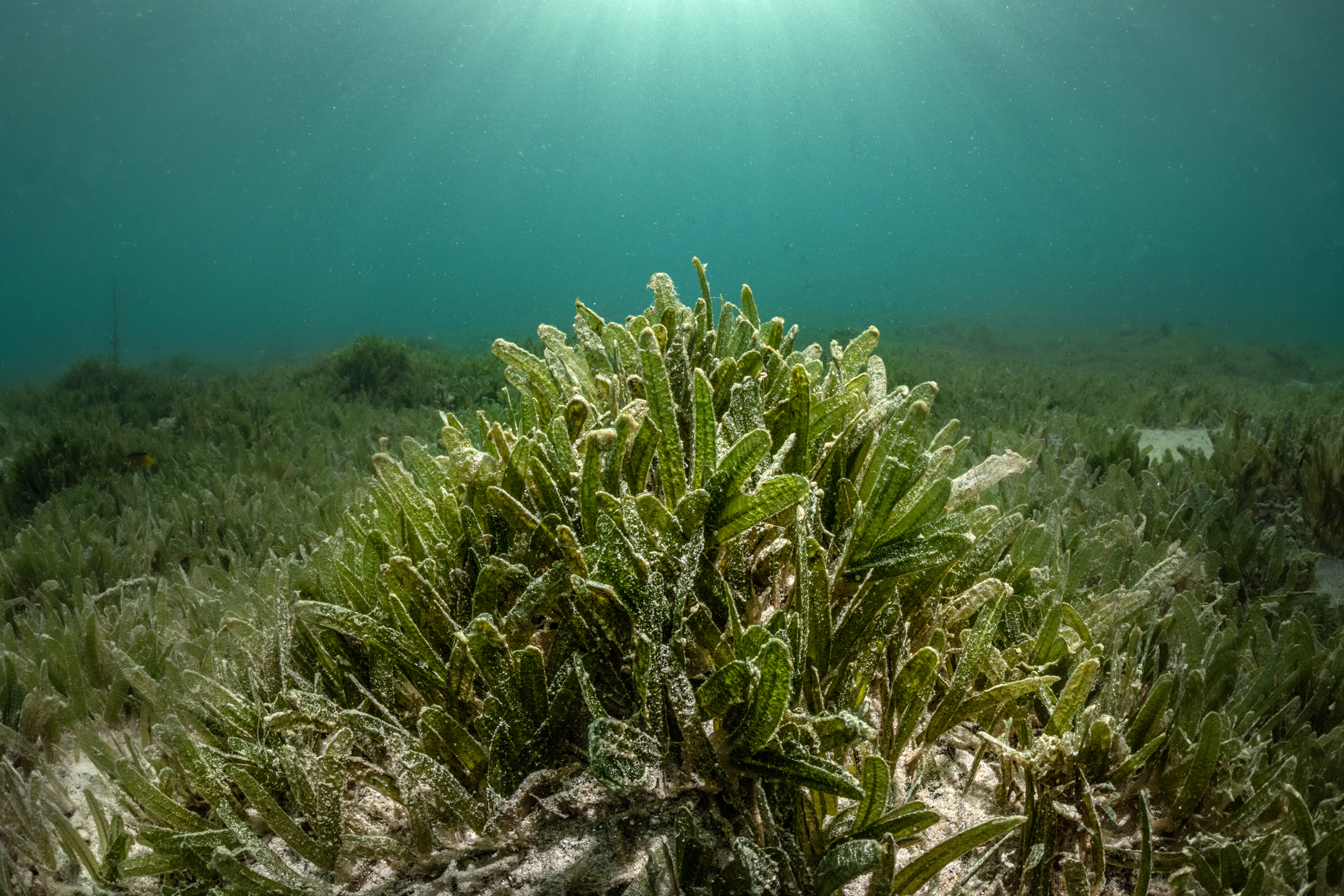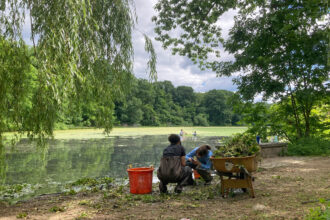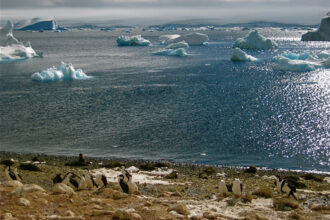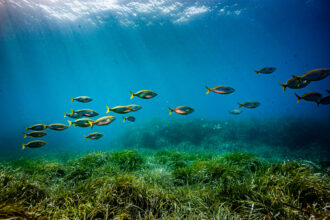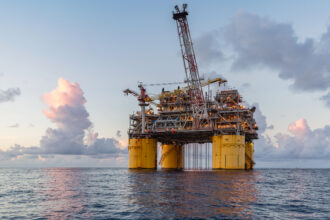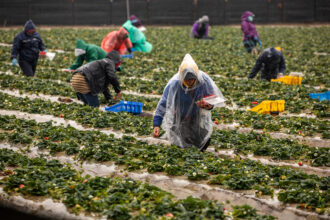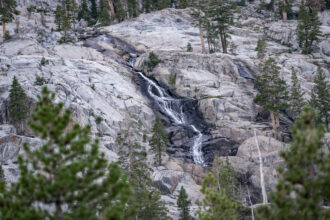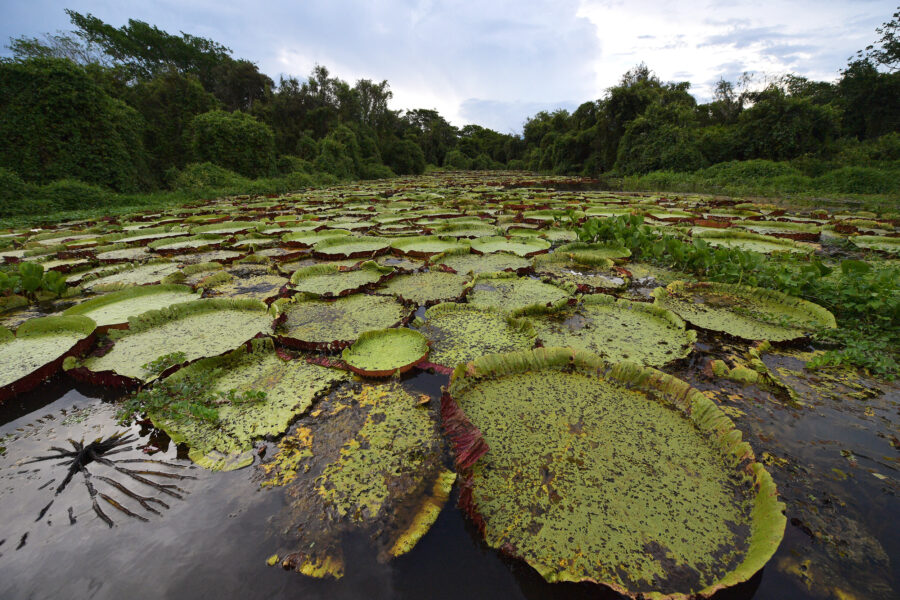It started life in the Indian Ocean, hitched a ride to the Mediterranean through the Suez Canal and kept pushing west. Now the fast-growing seagrass known as Halophila stipulacea is expanding in the Caribbean as waters warm, outcompeting important native grasses. It’s the definition of an invasive species.
But how bad is this globetrotter? Scientists are trying to understand the consequences of its spread because healthy seagrass is critical to ocean life—and us.
David Patriquin, a retired marine biology professor at Dalhousie University in Nova Scotia, Canada, ticks off the reasons we need healthy seagrasses. They support a wealth of species, from turtles to sharks to even birds. They’re critical nurseries for fish. They help protect the coasts during storms, each blade of grass helping to absorb and disperse the power of crashing waves. And they fight climate change by sucking carbon emissions out of the air.
“Carbon is stored in the sediments and in their roots, and it’s long-term storage,” Patriquin said. “That’s what’s important for carbon sequestration.”
In fact, seagrass is among the most efficient natural carbon sinks in the world, sequestering up to 18 percent of all oceanic carbon.
But not all seagrass is equally helpful. Newcomers can pose problems. Or they can offer unexpected benefits.
Halophila stipulacea, it turns out, does both.
Hello, Halophila
Picture a vast meadow the size of New York City’s 850-acre Central Park, but submerged and sprouting from the sea floor. Multiply that 88,000 times so it stretches from the tropics to the Arctic, and you have a lowball estimate for the current expanse of the world’s seagrass ecosystems.
Overall, seagrass habitats are contracting, buffeted by climate change, bad water quality and other woes.
But not Halophila stipulacea. It’s been gaining ground since the Suez Canal opened in Egypt in 1869. Climate change, in fact, gave it a boost.
“There had always been this barrier of how far west it could go because of the cold Atlantic water, and that’s changing now,” said Demian Willette, a professor at Loyola Marymount University and one of the world’s foremost Halophila stipulacea experts.
By 2002, it had reached Grenada. Two scientists, Hector Ruiz and David Ballantine of the University of Puerto Rico and the Smithsonian Institution, respectively, “found a tennis-court-sized patch of it near an offshore medical school,” Willette said.
In 2007, while working on his doctorate, Willette discovered it in Dominica, a tiny Caribbean island nation southeast of the Dominican Republic.
“I was swimming along the coast looking at all the native seagrasses, learning them,” Willette said. “I took a photo of something that was weird. A month later, I came back, read Ruiz and Ballantine’s paper,” and realized what it was.
Over the next few years, Willette watched Halophila stipulacea spread from one patch to the next in Dominica. By 2016, it had reached 19 islands in the Caribbean and made its way to South America.
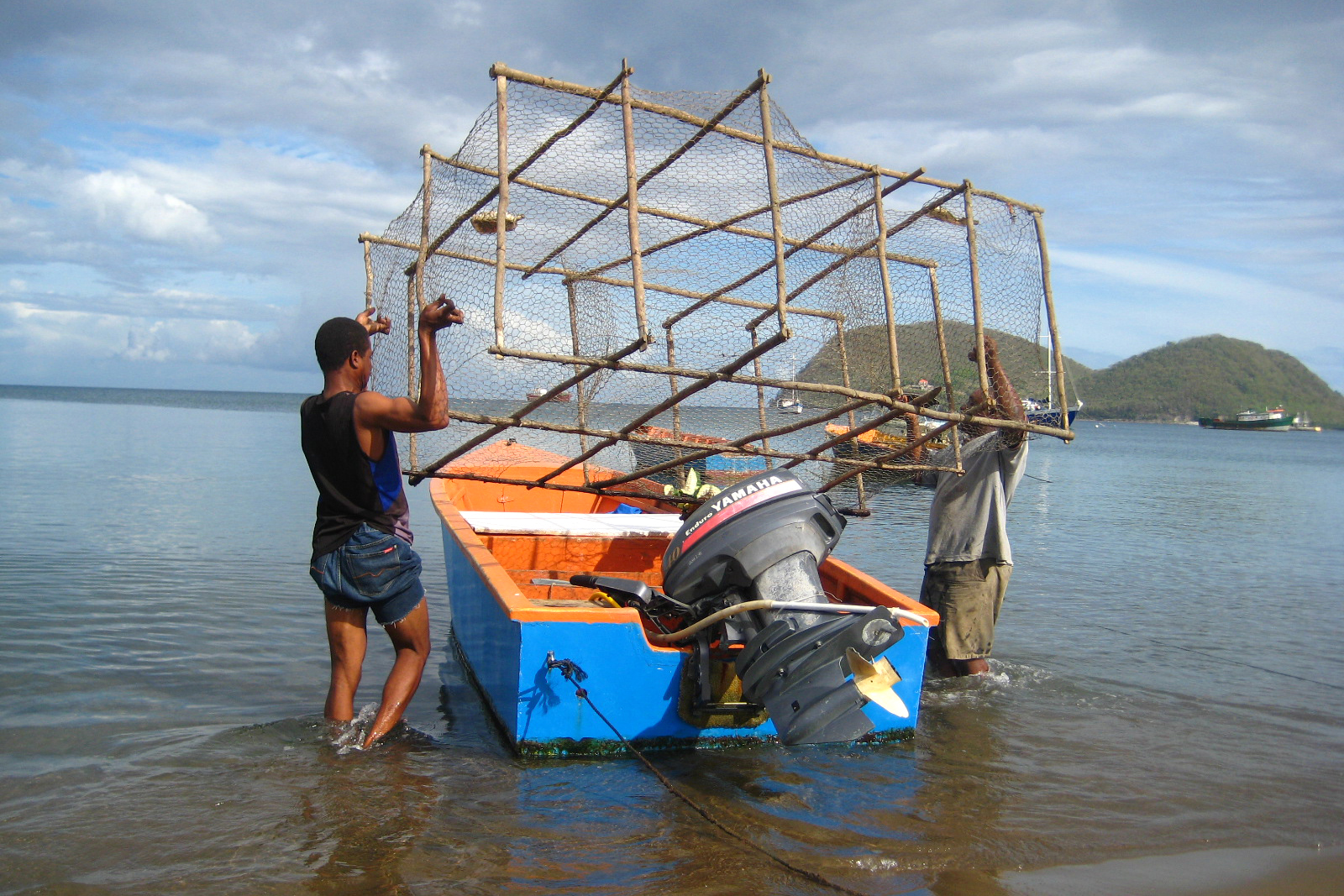
Willette estimates its spread at about 22 miles per year—incredibly speedy for a marine plant.
“How’s it getting around? Probably got from the Mediterranean to the Caribbean on recreational boats … hitched a ride and came across,” Willette said. “And once it got to the Caribbean? Just between island boats. It hooks onto anchors and fishing traps.”
This is why it’s such a talented traveler: “A piece as small as four centimeters is viable and can float through the water and grow larger,” Willette said. “It doesn’t need to be in the soil. It can fragment, photosynthesize and eventually settle and land somewhere new.”
It’s unusually versatile.
“Most seagrasses are limited by how deep they can grow because of light,” Willette said. He noted that Halophila stipulacea can clump chloroplasts, the structures that perform photosynthesis in seagrasses, in parts of its body, which may help it grow in deeper, darker waters. “I’ve seen it down at 60 feet, so at 18 meters. But in the Mediterranean, they’ve measured it at over a hundred meters [deep],” he said. “Most seagrasses just can’t do that. By chance, by whatever reason, it’s just well positioned to spread very, very quickly.”
Said Lauren Olinger, a quantitative reef ecologist and postdoctoral fellow at the University of the Virgin Islands: “Right now, I’m just wondering if and when it’s going to reach Florida.”
Scientists have been tracking Halophila stipulacea for several decades as it supplants native species. It’s outcompeting the Caribbean species Thalassia testudinum, known as turtle grass, and Syringodium filiforme, or manatee grass.
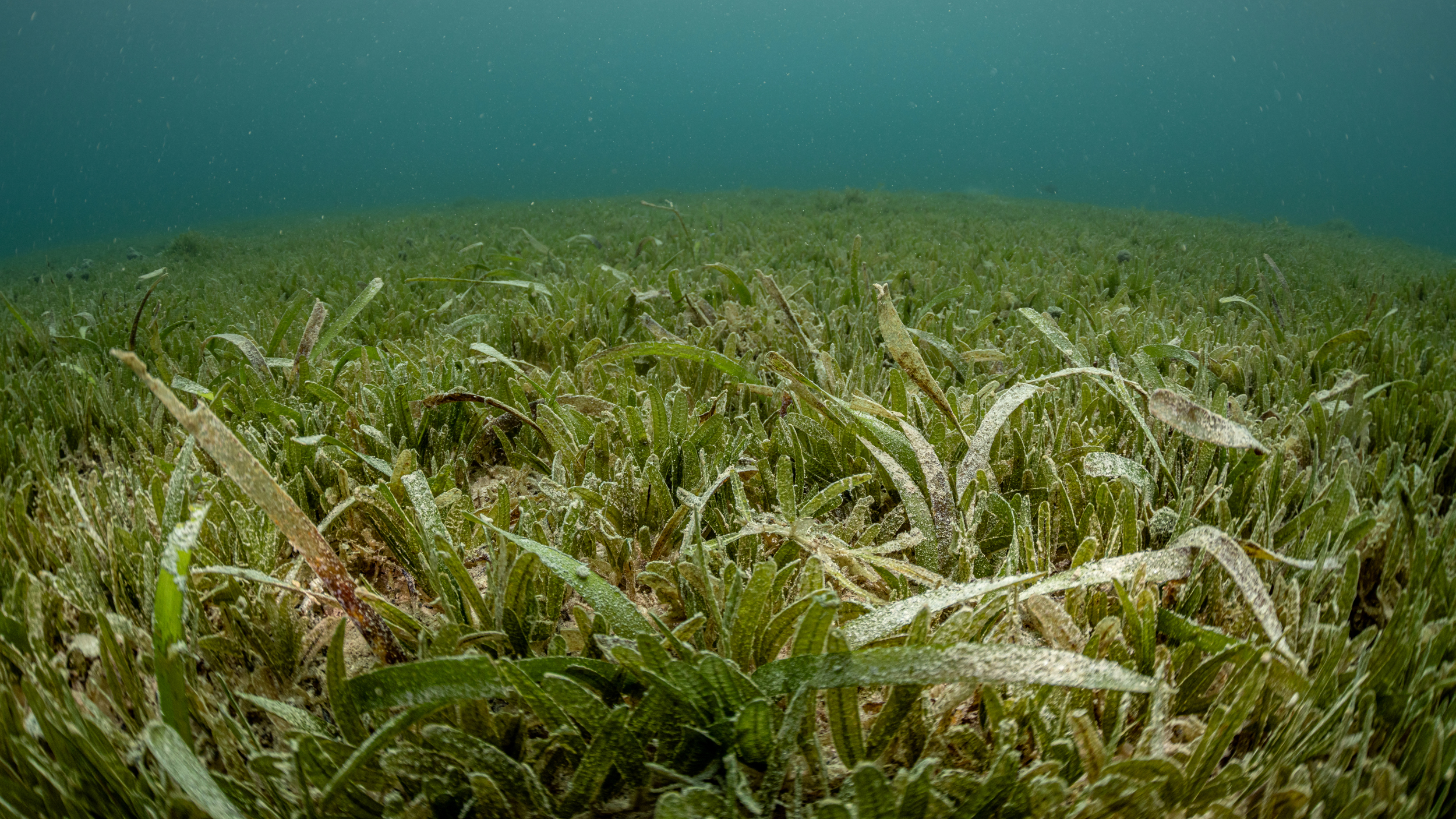
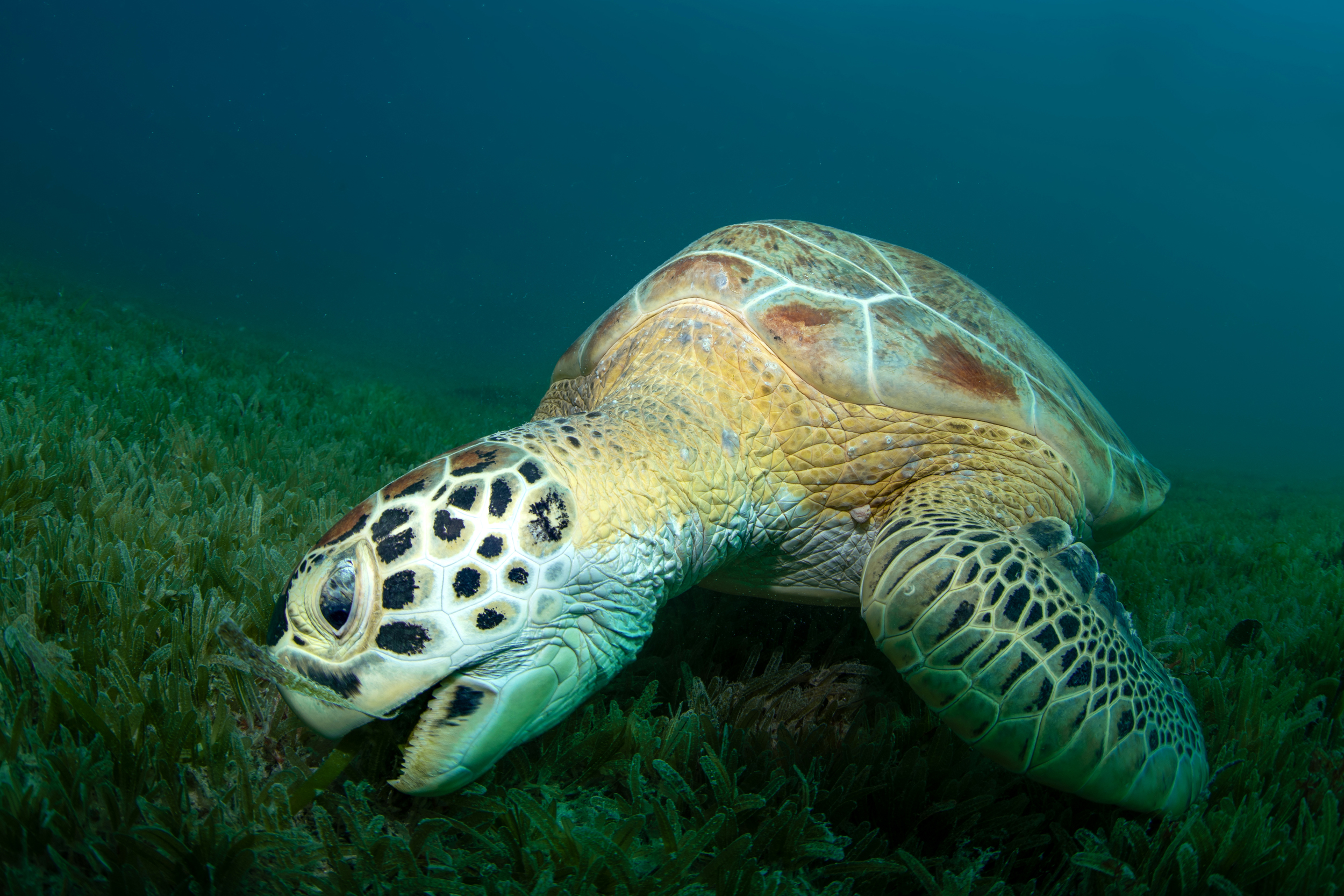
One problem with that: Halophila stipulacea doesn’t appear to be as good for some fish. Willette and six other researchers published a paper in June showing that young yellowtail snappers seem to do better in native seagrasses rather than Halophila stipulacea meadows.
“Seagrass is known as a nursery, but this invasive doesn’t act like it. It’s too short,” Willette said. “Then fish don’t live in there. They don’t recruit. So it’s changing the whole fish community as well.”
Another problem: less storm protection.
“You have a storm come in, and the tall seagrass can attenuate the wave,” Willette said. “This is small seagrass: [The storm] goes right over it.”
Halophila Lends a Helping Hand
But it’s not all bad news. Some other fish appreciate it, for instance. A 2017 study led by Olinger in St. Thomas in the U.S. Virgin Islands found that its meadows supported more nocturnal carnivores, such as snappers, while it had fewer daytime carnivores and herbivores than native grasses. In another study, Willette and a colleague found both Halophila and native seagrass meadows support about the same amount of fish.
In 2023, Olinger came back to St. Thomas and noticed an overgrowth of tiny pink sponges, Desmapsamma, on Halophila beds in Brewer’s Bay.
“At the same time that I saw those pink sponges, I saw this insane abundance of juvenile angelfish,” Olinger said. “Angelfish are spongivores, so I’m thinking that maybe this Halophila is providing a surface on which these pink sponges can grow, and then they’re also being able to feed these juvenile angelfish.”
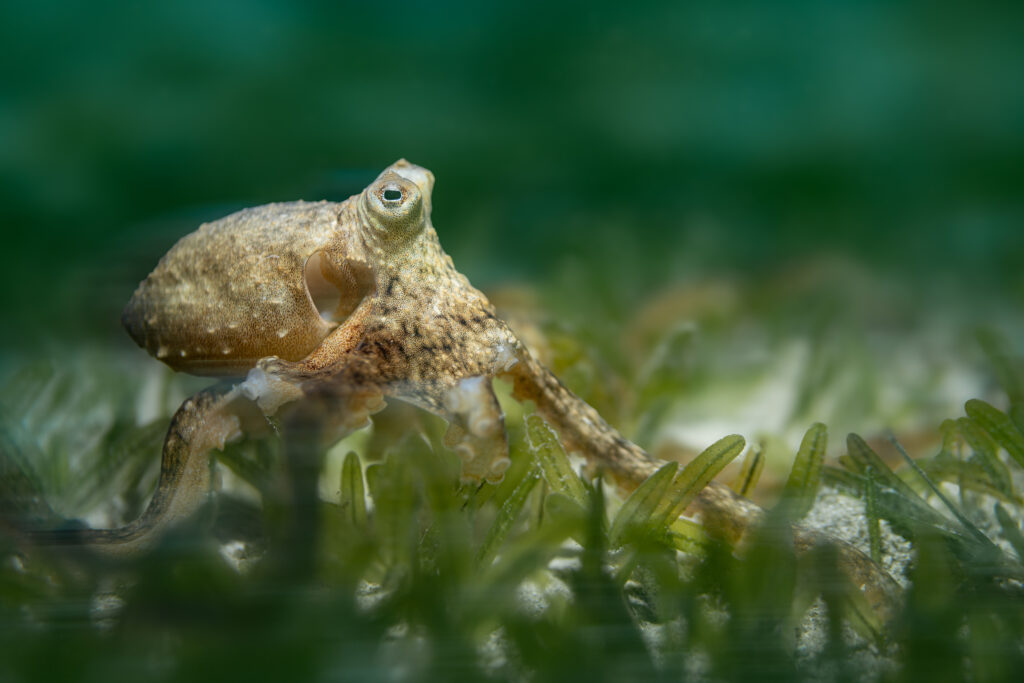
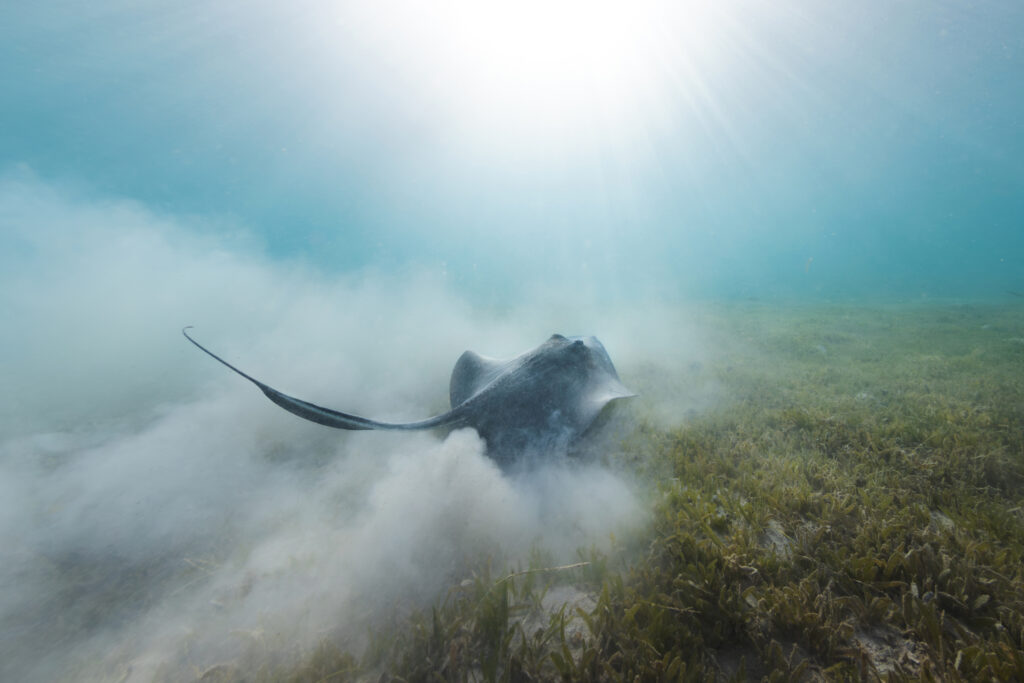
Dan Mele, a coral biologist and conservation photographer based in the U.S. Virgin Islands, has an up-close view of seagrass differences through his videography.
“When I was filming in the native seagrasses, like the long Thalassia beds, I honestly had a much harder time finding a wide array of diversity of species,” Mele said. “When I was exploring in Halophila, which are these short little stubby blades, each about the size of a pinky … I would find all these little critters, like little nudibranchs and sea slugs.”
That’s not all.
“What’s interesting is there’s actually more seagrass in the Caribbean now on places like Dominica than there was 20 years ago,” Willette said. “It’s because the invasive is occupying a place that was previously just open sand.”
This story is funded by readers like you.
Our nonprofit newsroom provides award-winning climate coverage free of charge and advertising. We rely on donations from readers like you to keep going. Please donate now to support our work.
Donate NowSeagrass cover around Dominica doubled in just five years, from 2008 to 2013.
Halophila gets the credit, Willette said. “It’s going everywhere.”
More seagrass in places that were previously bare sand means more carbon sequestration. Halophila stipulacea is quite good at that—and might actually help other seagrass species, not just outcompete them.
“It’s holding down the soil, secreting carbon, secreting nutrients into the soil,” Willette said. “My hope is that maybe the natives then start reintroducing back into those areas.”
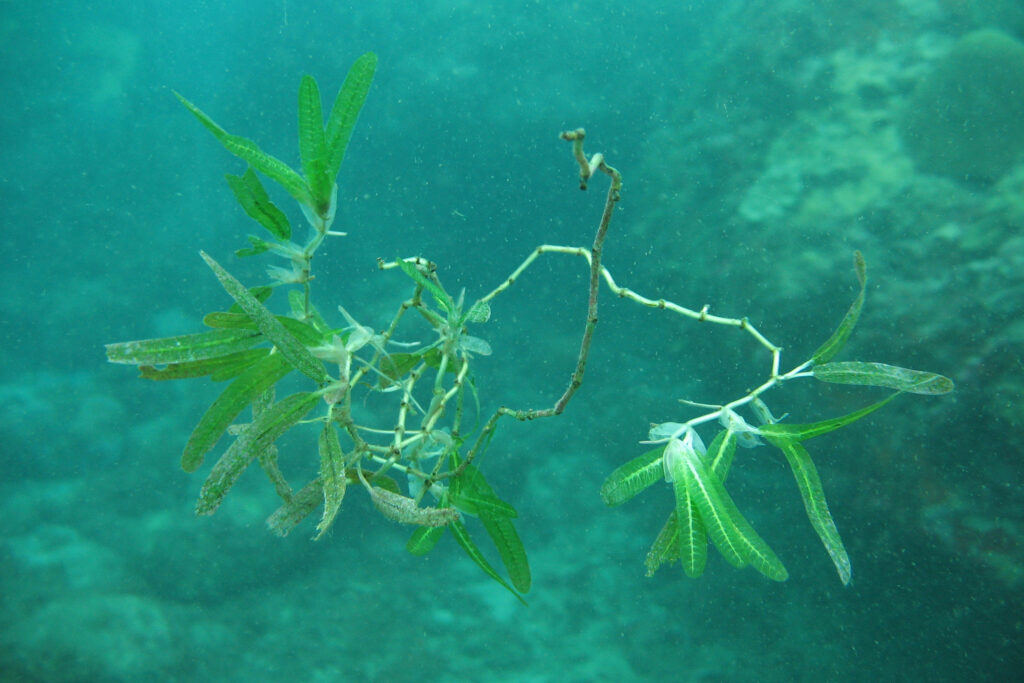
It’s an ecological concept called facilitation: One species settling in an environment can set off a positive chain reaction.
It’s still a good idea to protect native seagrasses, scientists said. When they’re healthy and densely populated, there’s no room for Halophila to take over and scramble the way an ecosystem is working.
But Willette, for one, thinks differently about invasive species now than he did at the start of his career.
“These organisms are not innately mean or bad,” he said. “They’re just animals. They’re just life. They don’t know that they’re invasive. They’re just trying to complete their life cycle.”
And the research underscores an increasingly nuanced view of these species: Some really do create havoc in new places, while others don’t.
“With Halophila, it’s not so cut and dry,” said Mele, the coral biologist.
Not necessarily better. But also not unavoidably worse.
“In time, this invasive species will fit into the local ecosystems,” Willette said. “That’s my hope.”
About This Story
Perhaps you noticed: This story, like all the news we publish, is free to read. That’s because Inside Climate News is a 501c3 nonprofit organization. We do not charge a subscription fee, lock our news behind a paywall, or clutter our website with ads. We make our news on climate and the environment freely available to you and anyone who wants it.
That’s not all. We also share our news for free with scores of other media organizations around the country. Many of them can’t afford to do environmental journalism of their own. We’ve built bureaus from coast to coast to report local stories, collaborate with local newsrooms and co-publish articles so that this vital work is shared as widely as possible.
Two of us launched ICN in 2007. Six years later we earned a Pulitzer Prize for National Reporting, and now we run the oldest and largest dedicated climate newsroom in the nation. We tell the story in all its complexity. We hold polluters accountable. We expose environmental injustice. We debunk misinformation. We scrutinize solutions and inspire action.
Donations from readers like you fund every aspect of what we do. If you don’t already, will you support our ongoing work, our reporting on the biggest crisis facing our planet, and help us reach even more readers in more places?
Please take a moment to make a tax-deductible donation. Every one of them makes a difference.
Thank you,

